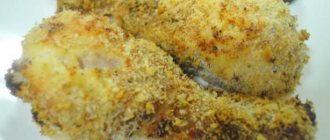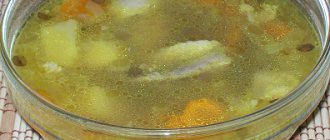One of the main lentil growing areas in the world is the Canadian province of Saskatchewan. This crop is the main agricultural export of the province. Thus, in 2020, the province exported 5 million tons of legumes worth $3.5 billion, of which just over $2 billion were lentils: $1,400 million for red and more than $600 million for green. Interestingly, the lentil industry emerged in Saskatchewan almost from scratch in the last half century, and now supplies products to India, a country where lentils have been a significant share of consumption for millennia. Therefore, for those who are interested in a relatively little-known (more precisely, half-forgotten) crop for Ukraine, we provide recommendations from the association of legume producers in the province of Saskatchewan.
Beneficial properties of lentils
Lentils are a product genetically adapted to the human digestive system. It contains a large amount of complex proteins and carbohydrates, which ensure a feeling of fullness for a long time. A 100 gram lentil dish contains only 250-295 Kcal. Read also: Flowers: beneficial properties, contraindications, benefits and harm.
Easily digestible protein (60% by weight) can easily replace meat, especially when dieting. This protein is absorbed better and faster, and does not remain undigested to rot in the stomach, creating heaviness and unpleasant smelling burps. A serving of lentils satisfies 90% of an adult’s daily requirement for folic acid.
In 100 g of lentils, the fat content does not exceed 1 g. With this amount of fat, you won’t accumulate extra pounds, but you can be well-fed, beautiful and healthy. Replace pasta and porridge with a lentil side dish, and you will see that it was not for nothing that Esau at one time gave up his birthright for lentil stew.
To appreciate the beneficial properties of lentils, it is enough to list the content of macro- and microelements in the beans of this crop: calcium, magnesium, sodium, potassium, phosphorus, chlorine, sulfur, iron, zinc, aluminum, manganese, copper, selenium, cobalt, chromium, molybdenum , iodine, boron, silicon, nickel, titanium.
Lentils contain vitamins “A”, “PP”, “E”, “B1”, “B2”, “B5”, “B6”, “B9” (folic acid), beta-carotene.
The common phrase that serotonin is found in chocolate applies equally well to lentils. Its beans contain the amino acid tryptophan, which in the human body is converted into serotonin, the so-called “vitamin of happiness”. Serotonin affects mental stability, endurance, and reduces the period of depression.
What types of table lentils are there?
The choice of beans depends on what dish will be prepared from this crop.
Types of Lentil Beans
There are several types of edible lentils, the main difference between which is consistency and taste:
- Yellow, or Egyptian, is a green lentil without a shell. It is distinguished by its rapid preparation without pre-soaking. It is used to make puree and goes well with stewed vegetables. It does not exist in nature; green lentil beans are ground and the color is obtained by heat treatment.
- Red lentils have an earthy flavor. This is ideal for purees and cream soups. It cooks quickly, as it does not have a shell, and after cooking it loses its shape. This type is considered the most high-calorie, containing the most vegetable protein and iron.
- Brown, or Spanish, is the most common type. Soaking in water before cooking ensures quick cooking, the beans are perfectly cooked, so they become invisible in the soup.
- The green one is called French. These are unripe beans that are soft and tender after cooking. After cooking, they do not lose color and require long cooking. This is an ideal option for salads, casseroles, first courses, salads, and serves as an excellent side dish for meat and fish. Green lentils are high in dietary fiber.
- Black, or “beluga”, is fine-grained and resembles black caviar in appearance. The beans do not become soft when cooked and retain their shape. It is considered an elite variety. After cooking, the shell of the bean softens, and the color and shape are preserved. This is an excellent option for first courses, as well as side dishes, stews, salads, sauces and even sweet dishes.
- White is the raw material for lentil flour. The beans are hard and require soaking before cooking. This type of lentil is used to prepare appetizers, stews, and stewed with vegetables. Its taste and aroma are weak compared to other types.
Important! In combination with cereals, green lentils provide the body with almost all the amino acids necessary for protein synthesis.
Medicinal properties of lentils
- Regardless of growing conditions, lentils never accumulate nitrates, nitrites, radionuclides and other substances toxic to human health.
- Lentil fruits strengthen the heart muscle and participate in the process of hematopoiesis.
- Lowers blood sugar levels. Lentil dishes are indispensable for diabetes.
- Purees, soups, and cereals are used in dietary nutrition for the treatment of ulcers and colitis.
- Lentils, even after thermal processing, retain isoflavones - substances that are very important for maintaining women’s health. They have a negative effect on cancer cells that cause breast cancer, significantly reduce the risk of cardiovascular disease, improve the elasticity of the arteries, which leads to a decrease in blood pressure, suppress platelet activity, etc.
However, when including lentils in your diet, do not forget about the contraindications:
- for diseases of the kidneys and genitourinary system,
- for liver disease,
- for dysbacteriosis and gastrointestinal diseases,
- during the acute period of hemorrhoids,
- for gout,
- can reduce the absorption of some vitamins and microelements.
Remember! Everything is useful in moderation. You can't overeat on lentils.
Why is this crop so attractive and why should it be introduced into the cultural rotation in your gardens and dachas?
Where and how do lentils grow? Features of growing lentils. Properties of lentils
Lentils are an amazingly valuable plant from a large family of legumes. She is well known in our country, she is popular abroad. How lentils grow, what are the features of its cultivation, read the article.
Description of culture
Lentils are an annual herbaceous plant whose height reaches sixty centimeters. The bush is not large in size. Its stems have a tetrahedral shape and a reddish tint. They are erect or lodging, depending on the variety. The entire length of the stems is covered with hairs of small size and medium hardness.
Lentils have complex leaves with a pinnate structure. The petiole at the base has a tendril, which can be branched or simple. The size and shape of stipules differ in different varieties of lentils. Short flower stalks have one or several small flowers, shaped like moths. Most often the petals are painted white, but they can be blue-blue or violet-blue.
The growing season varies depending on the variety, weather conditions and soil. Its duration can be from two and a half months to four. Until the flowering period has arrived, which occurs at the end of May - beginning of June, it grows slowly. When the first flowers appear (six weeks after germination), the growth and branching of the bush accelerates.
Characteristics of the fetus
This is a bean that ripens in one nest with two doors. It is elongated, diamond-shaped and prone to cracking when overripe. There are few fruits, from one to three pieces. They have a round or flattened shape and small sizes, up to two centimeters in length.
The fruits are yellow, red, green, pink, brown, gray, black, with a marbled dotted or spotted pattern.
Lentils in Russia
In our country, this culture was known a long time ago, five hundred years ago. In those distant times, lentils were grown in Russia on the Russian Plain.
As a grain crop it had high value. Where do lentils grow in Russia? In the last century, its place of growth in our country was the black soil regions of the Volga region and the Urals.
Lentils grew in the North Caucasus and Ukraine.
It was called crane peas, sochevitsa, vichka, lyashta. Lentils were used for baking bread, making porridge and soup. Sausages and sweets were made from it. Currently, lentils in Russia grow in the Volga region, the Central Black Earth regions of the country, in small areas of Tatarstan, Mordovia, Chuvashia, and the western regions of Siberia.
The legume crop will show all its best qualities if the following features of growing lentils are observed:
- For plant growth, fruit formation and high yield, an important feature should be taken into account. The growing conditions for lentils are such that they need a lot of light over a long period of time for normal growth. Even ten hours of daylight will not satisfy her needs. The plant will be frail, the fruits will not ripen, and the yield will decrease.
- Another feature is the provision of moisture and warmth to the plant from the beginning of the growing season. Later, lentils easily withstand drought.
- Seeds are able to germinate in soil warmed to just five to six degrees Celsius. This temperature is considered low.
- Where do lentils grow? The crop cannot be grown on compacted soils with low fertility.
- How do lentils grow? Immediately after planting, lentils grow slowly. She is very sensitive to the presence of weeds in the neighborhood. Therefore, during this period, the beds should be weeded especially carefully.
- Nitrogen accumulates in the roots, which makes the soil more fertile. For this reason, legumes in general, and lentils in particular, are of interest to agriculture.
- The fruits can be consumed unripe, they are even tastier.
The soil
Where do lentils grow? She prefers sandy loam soils or loose loamy soils. In the absence of such a soil environment, heavy soils are used, knowingly counting on a low yield.
If the soils are very acidic, lime should be added to them or plants should be planted in areas previously designated for corn, winter crops or potatoes. Light soils with sufficient moisture are considered ideal.
Lentils grow poorly in soils with high acidity and waterlogging.
What fertilizers should I apply?
Many people grow lentils in their country houses. After choosing a planting site, the soil must be fertilized so that the beans grow well and produce a high yield.
How do lentils grow? For normal growth in the spring before planting and in the fall during digging, the soil must be fertilized to increase its fertility.
Complex fertilizers containing phosphorus and potassium are ideal. Fifty grams per square meter is enough.
You can apply other fertilizers. How do lentils grow? There will be good growth and a high yield if, while digging the beds in the fall, you add superphosphate and potassium salt in the amount of 20-50 grams and 10-30, respectively. In spring, the soil is enriched with ammonium nitrate: 10-30 grams per square meter.
Sowing seeds
Planting beans begins early because it is important that accumulated moisture is retained in the soil, otherwise the plants will germinate late. Narrow rows are made in the prepared soil, twenty centimeters from one another. Lentil crops are always dense. The seeds are planted shallowly in the soil, three to five centimeters is enough. They are small in size.
Although there are several of them in a pod, the seeds are sown into the ground separately, each at a distance of ten to fifteen centimeters from each other. The deep layers of soil, at the level of sowing seeds, should warm up to a temperature of three to four degrees Celsius. To ensure friendly seedlings, seedlings covered with soil are rolled for closer contact with the ground.
Care
The technology for growing lentils involves many agrotechnical measures, one of which is care. This legume is an unpretentious plant. The photo clearly shows how lentils grow. She calmly tolerates drought and light frosts. But in the first six months after planting, you need to water the soil regularly (daily) to prevent it from drying out.
Moisture is needed for the growth of the entire plant, but especially for the roots during this period. When they get stronger and gain strength, watering is reduced to two to three times a week. If there are a lot of weeds in the garden bed, they should be weeded between the rows and bushes, otherwise they will choke the lentils and they may die.
Harvest
The ripening of beans occurs unevenly: the lower pods ripen earlier than the upper ones. For this reason, they are harvested in two stages: the first - when all the beans are ripe, except those growing in the upper part of the stem, the second - the final harvest when the beans on the entire plant are fully ripened. The fruits are of good quality - they do not crack.
Many field growers mistakenly believe that harvesting can wait. This is a wrong opinion. When harvesting is late, the fruits retain their appearance, but lose their beneficial qualities. The green color of the beans indicates the high quality of the lentils, and in overripe fruits it changes to a brown tint.
This process is not difficult. First, the beans need to be doused with boiling water. This will stimulate growth. Then fill with water for eight to fourteen hours. After this time, the beans are washed and placed on a damp cloth.
The top is covered with several layers of gauze and placed in a dark place. It should be the warmest in the room. Every day the lentils are washed twice. The sprouts will sprout very quickly. When their length is one or two centimeters, they can be consumed.
Sprouted beans should be stored in the refrigerator for no more than five days.
Medicinal properties
Lentils have long been used for medicinal purposes. It has the following healing properties:
- Growing in any conditions, lentils are characterized by the absence of nitrates, radionuclides and other toxic substances; they have the ability not to accumulate them.
- Its fruits help strengthen the heart muscle and normalize the process of hematopoiesis.
- Regular consumption of lentil dishes lowers blood sugar. It is recommended to include it in the diet of people with diabetes.
- For stomach ulcers and colitis, the patient is prescribed a special diet, which includes first and second courses based on lentils.
- Its composition, even after treatment at high temperatures, retains important substances - isoflavones that support women's health. They resist breast cancer cells and prevent the tumor from spreading.
- People who eat lentils are less susceptible to cardiovascular disease and hypertension.
Nutritional value
The nutritional and healing qualities of lentils have long been appreciated in Europe, from where they spread to the eastern regions, where they are becoming increasingly popular. The nutritional value of legumes is as follows:
- Lentils are adapted to the perception of the human body. It is well digested and absorbed. Complex proteins and carbohydrates in lentils saturate the body, the feeling of hunger disappears for a long time, although one hundred grams of the product contains less than three hundred kilocalories.
- Due to their high protein content, which are easily digestible, beans replace meat. This is especially important for nutrition during diets. A small portion of beans per day can satisfy a person’s need for such a valuable substance as folic acid.
- Lentils are low in fat; there is only one gram of fat per hundred grams of product. This amount of fat will not increase body weight, but will provide a feeling of satiety, health and beauty.
- Lentils are distinguished by their content of almost all chemical elements of the periodic table; they contain vitamins of different groups. It is generally accepted that only chocolate contains serotonin. This is wrong. Lentils contain the amino acid tryptophan in large quantities. In the body, it is converted into serotonin, which is called the “vitamin of happiness.” And rightly so: the psyche becomes more stable, a person develops endurance in stressful situations, and depressive states decrease over time.
Damage to lentils
Undoubtedly, beans have a lot of beneficial nutritional and healing properties. But they also have disadvantages. People suffering from diseases such as gout, uric acid diathesis, vascular and heart dysfunction, diseases of the joints and genitourinary system, and excess weight should avoid lentil dishes.
Diseases and pests
Lentils, like many other plants, are susceptible to pests and diseases. Beans are a breeding ground for lentil weevil, cutworm and meadow moth. The plant has weak immunity. Suffers from fusarium, ascochyta and rust.
Useful tips
For those who grow vegetables, including lentils, any good advice will be beneficial.
- When sowing seeds, you have to move around the bed. To avoid leaving deep marks on the soil, you can use boards. They are placed directly on the ground. They not only protect loose soil, but also trample it evenly, ensuring close contact with the seeds.
- For better germination, fruits are soaked for two days in a specially prepared solution. Place several silicon stones in a glass of water and leave for about two weeks.
- To make the collected beans clear faster, the pods are dried in the sun, put in a bag and rolled. The fruits are instantly released from the pods.
Application
Lentils are used in the food industry. Concentrates of purees and soups are made from it. Beans are used to cook first courses, porridges, prepare salads, stew them, and use them in combination with mint and other seasonings. Fruit sprouts rich in folic acid are especially valued.
Source: https://FB.ru/article/316750/gde-i-kak-rastet-chechevitsa-osobennosti-vyiraschivaniya-chechevitsyi-svoystva-chechevitsyi
Botanical description of lentils
Common lentil is an annual herbaceous plant with a height of 30 to 60 cm. In the process of growth and development, it forms a low bush with thin 4-sided, erect, sometimes semi- or completely lodging stems. The stems of lentils are reddish in color and covered with short semi-rigid hairs.
The leaves are compound, pair-pinnate, with varying numbers of leaflets. At the base of the petiole there is a simple or branched tendril. There are stipules, the shape and size of which (like leaves) depends on the variety. Short flower stalks of lentils bear 1-4 small moth-shaped flowers of white, less often blue-blue or violet-blue color.
The fruit of the lentil is a single-locular bean, bivalve, diamond-shaped and elongated, prone to cracking when the crop is overripe. Seeds (1-3 pieces) flattened or round. The color scheme of the seeds is multicolored: yellow, green, pink, red, gray, brown, black, marbled pattern of dots and spots. The root of lentils is a taproot with few branches.
Some doubts
Are lentils a legume or not? On the one hand, it is similar to legumes, beans, peas, chickpeas and soybeans. On the other hand - with acacia, alfalfa, mimosa and clover. What family does lentil belong to?
Lentils are a whole genus of herbaceous plants in the legume family. The only type used for food is edible lentils; they are also called table lentils, plate lentils, ordinary lentils, and cultivated lentils. Different varieties have different flavors.
On a note! Are lentil beans a fruit or not? Since they are in pods, they are considered fruits of the crop.
The fruits of leguminous plants are found in pods, respectively, lentil beans are its fruits
Biological features of lentils
Common cultivated lentils are divided into 2 subspecies:
- large-seeded (plate) lentils used as a food product,
- small-seeded lentils, which are mainly used to feed livestock as a protein-rich food.
Unlike other legumes, lentils are relatively undemanding to heat. Seeds germinate at +3 - +4°C. Fast and vigorous shoots appear on days 6-7 when the soil in a 10 cm layer warms up to +7 - +10°C. At lower temperatures, seedlings appear in 8-12 days. Lentil seedlings can withstand frosts down to -3 - -5°C. The optimal temperature during the growing season ranges from +12 to +21°C.
Due to their slow growth before flowering, lentils require constant protection from weeds and increased moisture availability.
Lentil flowering begins on day 40-45. From flowering to harvest, it is superior to other legumes in its resistance to drought and high temperatures. This property allows lentils to be cultivated in dry areas.
Lentils grow well and form fairly high yields on medium-fertile, loose, breathable soils: chestnut and light podzolic, loamy, sandy loam and ordinary chernozems, rich in calcium compounds.
Lentils do not tolerate heavy compacted soils (chernozems), with low air exchange, acidic, saline soils with high groundwater levels. On soils enriched with humus and nitrogen, it forms mainly rich vegetative mass. The beans ripen unevenly, and their taste and quality indicators decrease.
Lentils form nitrogen-fixing nodules on their roots, enriching the soil with nitrogen.
Lentils - how to plant and grow in open ground
How to plant lentils - steps:
- Selecting a variety and purchasing seeds. Preference is given to legumes with resistance to common diseases.
- Determination of the place and time of planting. Lentils feel better in loamy, sandy soil, but acidified soil is not suitable for sowing. At the same time, the area in the country where the crop will grow must be sunny. The ideal period for sowing is mid-spring, when the earth warms up to +5 degrees and above.
- Treating seeds to increase the likelihood of germination. The grains are soaked for a day in a solution of aloe and water (an analogue is the drug Epin), then dried.
- Soil preparation. Before sowing, the land is treated with limestone, plowed and fertilized with organic matter. Phosphorus and potassium are used as fertilizing. Superphosphate can be added during planting.
- Sowing. Scheme on how to plant lentils: you need to make shallow furrows of 4-5 cm, place the grains at a distance of 12 cm from each other and cover with soil. When planting lentils in open ground, you can water them. As soon as sprouts begin to appear, the rows should be weeded.
Bean fruits actively form within a month after planting and do not require special care
Important! Lentils favorably coexist with potatoes, corn, and winter wheat.
Sprouted lentils - health benefits and harms
Lentils, known since ancient times, have survived as an agricultural crop to the present day. Due to the protein content in it, its fruits are equivalent to vegetable, very satisfying and nutritious meat.
Compound
Lentils contain a high content of B vitamins, which regulate the functioning of internal organs and affect the condition of the skin and hair. But the sprouted seeds of this plant are of particular interest.
- Lentil seeds have the ability to synthesize and accumulate useful substances during germination. During germination, the content of vitamin C, protein, antioxidants, micro and macro elements in the composition of tender and tasty lentil seeds increases many times over.
- In addition to these elements, lentil fruits contain carbohydrates of a special structure and composition: they have the ability to be actively processed during the day.
- Iron, in combination with numerous minerals, enriches the blood, improving its composition. This is a unique nutrition for the entire human body: the brain, muscle tissue and fibers of all internal organs.
The content of vitamins and amino acids necessary for the normal functioning of the body increases:
- Lysine – promotes a more complete extraction of calcium from the blood and its transportation to the skeletal tissues of a living organism.
- Methionine – activates the body’s ability to resist inflammatory processes, liver diseases, and reduces muscle pain.
- Tryptophan is an amino acid, the deficiency of which is responsible for a person’s depressive state and his tendency to alcoholism.
- Thiamine - in combination with vitamins, ensures the formation of glucose, participates in the most important processes of the body: water-salt, fat, protein.
The answer to the question why it is necessary to sprout lentils is clear: to use the unique properties of the plant for the benefit of human health. The composition of sprouted beans does not change even when exposed to high temperatures.
What lentils look like and what they are, their types and varieties with a description
Undeservedly forgotten and displaced by other legumes, lentils are returning to our menu. It contains a large number of useful substances. This is an indispensable ingredient in dishes of both European and Asian cuisine.
Another advantage of lentil grains is that they do not accumulate toxins, pesticides, nitrates and nitrites. Let's try to figure out what lentils are, what they come in, its advantages and disadvantages.
Classification and description
Lentils are a plant from the legume family. Only one variety of it is grown in culture - food. This is an annual herbaceous plant that forms small bushes from 30 to 75 cm in height. Complex, oval-shaped, pair-pinnate leaves are located on short petioles.
Lentils bloom with small flowers collected in racemes. The buds are moth-shaped and are white, pink, and purple. After flowering, a small fruit is formed - a drooping diamond-shaped bean. It may contain from 1 to 3 seeds of a flattened shape with sharp edges. The color and size of the grains depends on the variety and variety of the plant.
The leader in lentil production in Russia is the Volga Federal District, in particular the Saratov Region.
Types of Lentils
Lentil types are differentiated by seed color and size. Nowadays green, red and specific varieties are grown. Specific types include black, brown and French green lentils. Based on grain size, there are 2 types of crops: large-seeded and small-seeded.
Each variety has its own varieties. The most popular lentil varieties in Russia are: Anfiya, Oktava, Belotserkovskaya-24, Dnepropetrovskaya-3, Novaya Luna, Petrovskaya-4/105, Tallinskaya-6, Penzenskaya-14, Petrovskaya Yubileynaya. All of them belong to the green plate variety of culture.
Black lentils
This is the most popular and expensive variety of grains. It is called Beluga because of its external resemblance to black caviar. The fruit of black lentil varieties is small (only 2-3 mm in diameter), glossy. The variety was developed in Canada, but it is especially popular in India. You can distinguish lentils by the color of the flowers (see photo for what it looks like).
Black grains contain the most proteins - 35%. Their color is due to the presence of a special pigment that has antioxidant properties.
Red lentils
The red-fruited crop is widespread in Asian countries. It is called pink or Egyptian. The grains are free from the shell, so it boils quickly and strongly.
In most cases, the red variety is represented by small-seeded varieties.
Green lentils
In our country, plate-type green lentils are mainly grown. It got its name due to the large size of its flat, plate-shaped seeds. Most varieties of the green variety are large-seeded.
The grains of the plate cereal varieties have a high level of protein - up to 31%. The most popular green lentil is the French de Puy. Green varieties can be all shades of green, from pale olive to bright green.
Yellow lentils
This variety includes such types as large Mexican Macachiados, which are characterized by a bright nutty taste, yellow with a red core, and yellow scaly Red Chief.
Yellow lentils are formed from green grains after removing their shells. Varieties such as Eston, Richli, and Laird are suitable for this.
The yellow grains are especially popular in India, where they are used to prepare the traditional dish sambhar. They are produced in Europe, America and other Asian countries. The yellow variety has the highest glycemic index at 30 units.
Brown lentils
Brown lentils are the most common type of product. A popular variety of brown grain is the Variegated (Pardina) lentil variety. This is a Spanish variety. It has a thin shell and dense consistency, and practically does not boil over.
This is the only variety that requires soaking before cooking.
Beneficial properties of lentils
Edible lentils contain 25-31% complete protein, which includes 21 amino acids, including 12 essential ones (threonine, arginine, tryptophan and others). Lentil protein is close in composition to animal protein and is easily digestible, which is especially important for vegetarians.
Lentil grains are rich in vitamins and minerals, antioxidants and other biologically active substances. Due to its chemical composition, lentils have the following beneficial properties:
- Carbohydrates in lentils are slow, so products and recipes with them are recommended for inclusion in diets for weight loss and sports nutrition. In addition, cereal stimulates metabolic processes in the body.
- The grains contain a large amount of insoluble dietary fiber, which normalizes digestion and improves peristalsis and intestinal microflora. They bind toxins and promote their elimination, regulate cholesterol and glucose levels in the body. Soluble fiber is transformed into a jelly-like mass, which helps maintain a feeling of fullness for a long time.
- Due to its low glycemic index, cereal helps lower blood sugar levels. Therefore, products and recipes with lentils are recommended for diabetics.
- Lentils stimulate the immune system and prevent the development of cancer.
- Amino acids are involved in metabolism, hematopoiesis, and immune response. Tryptophan takes part in the synthesis of the happiness hormone - serotonin, improves brain and nerve function. Threonine prevents fatty liver degeneration. Leucine is important for the health of bone and muscle tissue and skin. It is involved in the synthesis of growth hormone. Methionine is a strong antioxidant and stimulator of fat metabolism.
- The rich mineral composition of lentils has a positive effect on the entire body. Manganese is a powerful antioxidant. Magnesium activates some enzymes and accelerates tissue regeneration, improves the quality of blood circulation, and promotes oxygen saturation in the blood. Potassium normalizes the functioning of the cardiovascular system and hematopoiesis, regulates acid-base balance. The grains contain calcium, phosphorus, fluorine, copper, iodine, zinc, selenium, etc. 100 g of lentils contain a daily dose of molybdenum, which is involved in purine metabolism.
Iron
Lentil grains are a reliable source of iron, necessary for normal hematopoiesis and the prevention of iron-dependent anemia, which is especially important for vegetarians, children and pregnant women.
100 g of product contains 7.6 mg of iron. To improve iron absorption, grains should be consumed with vegetables and herbs.
Vitamins
Lentil cereals contain the following vitamins:
- Thiamine (B1). Takes part in the synthesis of nucleic acids and proteins, regenerative processes. Stimulates the functioning of the nervous and cardiovascular systems, adrenal glands.
- Riboflavin (B2) is a regulator of intracellular metabolism, general metabolism and glycogen synthesis in the liver, a central nervous system stimulant. Normalizes the tone of blood vessels, the number of leukocytes, and the functioning of the gastrointestinal tract. Improves skin and vision condition, reduces the risk of cancer.
- Folic acid is especially necessary for children and pregnant women. It is needed for normal bone marrow development. Prevents the development of neural abnormalities in utero development. Prevents the spread of tumor processes and radiation sickness. A serving of lentils contains your daily dose of vitamin B9.
- Nicotinic acid (NA) is a participant in all types of metabolism, a stimulator of hematopoiesis, the formation of leukocytes and prothrombin. PP increases performance and reduces cholesterol levels in the blood.
- Vikasol (K) is a regulator of blood clotting, its composition and condition, vascular permeability and elasticity.
- Tocopherol (E) is an antioxidant, necessary for the prevention of vascular sclerosis and muscle dystrophy, regulation of hematopoiesis and reproductive functions, the functioning of the nervous and cardiovascular systems, and metabolic processes.
- Carotenoids are stimulants of redox reactions. They influence the level of glucose and cholesterol in the blood and trigger regenerative processes in tissues.
Phytoestrogens
Lentil grains contain phytoestrogens that mimic the female sex hormone estrogen. These substances ease the course of menopause, prevent the development of tumor processes, endometriosis, uterine fibrosis and other pathologies in the female body.
Phytoestrogens have a gentler effect on the body than synthetic hormone substitutes and have fewer side effects. Isoflavones are not destroyed during cooking. Orange lentils are especially rich in these substances.
Calorie content of lentils
The culture is a low-calorie, low-fat product. The average calorie content of dry grain is 260-360 kcal, and cooked grain - 116-175 kcal.
The product contains fiber in soluble and insoluble form and protein, which give a feeling of fullness, so less grain is needed for cooking. Thanks to this, cereals are often included in diet menus for weight loss.
100 g of grains contain 21-31 g of protein, only 1.2-2 g of fat and 42-58 g of slow carbohydrates. The least amount of fat is found in red varieties of the plant.
Harm and contraindications of lentils
From grains you can prepare various dietary dishes suitable for therapeutic nutrition. But at the same time, the product has a number of contraindications for use.
Legumes stimulate increased gas formation, therefore they are not suitable for people suffering from diseases of the gastrointestinal tract such as dysbiosis, enterocolitis, biliary dyskinesia, cholelithiasis, gastritis. A contraindication for eating cereal is hemorrhoids.
Due to the fact that cereal contains natural purines, it should not be consumed by patients with gout, arthritis and arthrosis.
Long-term consumption of products made from lentil grains, containing about 30% protein, can lead to impaired kidney function, the development of nephritis or urolithiasis. The oxalates contained in cereals also contribute to this.
To reduce the negative impact of cereals on the gastrointestinal tract, you can cook it after pre-soaking it for 4-6 hours. Vegetables, herbs, and green tea will help reduce the negative impact of cereals on digestion.
Lentil grains reduce the level of absorption of calcium, iron, and zinc.
Children whose enzymatic system is still imperfect, and older people need to limit their consumption of the culture. It is acceptable to include it in the diet 3 times a week.
Signs of legume poisoning: vomiting, headache, yellowing of the skin, brown urine.
Use in cooking
There are small-seeded and large-seeded or plate crops. The latter is represented by seeds 5-9 mm in size in various shades of green. All other varieties (red, black, brown and others) are mainly small-seeded lentils.
It is believed that bowl grains have better taste and higher nutritional value, but each variety has its own merits.
Brown lentils have a distinct nutty aroma and spicy flavor. It is suitable for making soups. It can be added to salad, casserole, stew. This variety does not cook well.
Yellow cereal has a neutral taste. It boils quickly and is used for stews, puree soups, pates, and cereals.
Green cereals can have both a nutty and mushroom flavor. It retains its shape well when cooked and is used in salads and as a side dish for meat and fish dishes.
The red or orange grain has a savory, sweet flavor and is widely used in Asian cuisine.
Black lentils have a strong taste. Its unusual color fades a little when cooked. The variety goes well with vegetables, meat, fish and spices, and spicy tomato sauce.
Cereals can be used to prepare pates, cutlets, meatballs, and medallions. A drink reminiscent of coffee is made from lentils. Lentil flour is used for baking (bread, pancakes, pies) and protein shakes.
How to boil lentils
Cooking time for beans depends on the variety and color. So, green varieties are cooked for 25 to 40 minutes, brown varieties - 30-35 minutes, red and orange - no more than 20-30 minutes.
As a result of cooking, the grains increase in volume by 3 times. Red varieties hold their shape better. Lentils can be cooked round or split. The chopped one is used to make soups. It cooks for only 10-15 minutes.
In order to boil lentils for a side dish, you will first have to sort and wash them. Unlike other legumes, only the grains intended for soup are soaked to speed up their cooking and avoid overcooking other vegetables.
Pour cold water over the cereal at a ratio of 1:2 and bring to a boil. At this stage, you can add 1 tbsp to the pan. l. olive or other vegetable oil. The grains should simmer gently under the lid ajar for the required time. Just before the end of cooking, add salt to taste.
You can also cook grain in a slow cooker using the “Stew”, “Porridge” or “Grain” modes.
Red varieties can be cooked in the microwave. For this, 0.5 tbsp. pour hot water so that it covers the grains, salt to taste and place in the microwave oven on the “Vegetables” mode or simply on the most powerful mode for 7-10 minutes.
Lentils go well with rosemary, bay leaf, sage, pepper, and soy sauce.
How to store lentils
Lentil seeds can be stored for quite a long time. Over time, they dry out, darken and become harder. Then you have to cook them longer, but this does not affect the nutritional value.
The optimal shelf life is 10-12 months. Lentil grains turn pale when stored in light, so it is better to keep them in a dark place or in opaque containers or dark glass jars. A fabric bag or cardboard box is suitable for grains. In sealed containers and plastic bags, if legumes are stored with a humidity above 14%, condensation may form.
Store grain in a cool, dry place with good ventilation. In a damp room, legumes will become covered with plaque, may begin to rot, oxidize, and acquire an unpleasant odor. The same thing happens in a well-heated room or near heat sources.
Cooked lentil grains can be stored in an airtight container in the refrigerator for 5 days. Boiled grain can be stored in the freezer for 6 months. At the same time, the nutritional value will decrease and the consistency will change, but the taste will remain the same.
Source: https://DachaMechty.ru/chechevitsa/chto-takoe-sorta.html
Beneficial features
Vegetarians use sprouted lentils as a natural source of protein. To prepare dishes, there is no need to pre-soak it, since it cooks for no more than 30-40 minutes, depending on the variety.
Important! Sprouted lentils, due to their composition, help lower blood sugar, which is very useful for diabetics. Reducing cholesterol is also an advantage of the beneficial substances contained in seed sprouts. Nutritionists recommend that obese people include sprouted lentils in their diet.
The ability of lentil protein to easily break down prevents clogging of the body with heavy toxins. Slow carbohydrates, which sprouted beans are so rich in, and fiber nourish the body, relieving symptoms of fatigue. Sprouted lentil beans have been used since the time of our grandfathers and great-grandfathers as a highly effective medicinal remedy.
It is not difficult to sprout lentils at home - this way, everyone can have an excellent medicinal product on hand. It has been proven for thousands of years that those who have sprouted lentils in their diet are protected from colds during the cold season. It has been proven that colds caused by infection proceed without complications in a shorter time.
Fact! Despite the low calorie content, lentil dishes are light. This is especially useful for pregnant women.
Doctors claim that with regular consumption of lentils, the body becomes more resistant to allergens. Sprouts can be served as salads to adults and children.
Lentil sprouts are especially useful for a weakened body prone to the following diseases: anemia or anemia, with characteristic low levels of hemoglobin and red blood cells in the blood.
Types of Lentils
Types of Lentils
Lentils can be large-seeded (plate-shaped) or small-seeded. The latter is more labor-intensive to grow and therefore costs more.
- Green (French) or unripe brown. A very useful product for people suffering from gastrointestinal diseases and diabetes. It takes at least an hour to prepare, but it tastes better than other types. Can be used in the diet of small children (need to be introduced into the diet gradually) and pregnant women.
- Brown . Most often used for preparing first courses, appetizers, and salads. Pre-soaked seeds are ready in 0.5 hours. Gives dishes a nutty aroma, the grain retains its shape during prolonged heat treatment.
- Black . Brought out in Canada, the seeds are small - about 0.3 cm, black. They cook quickly (20 minutes) and have a delicate, original taste.
- Red (Egyptian) . Seeds, peeled from the shell, cook in a quarter of an hour or even faster; they make excellent soups and purees. These lentils contain a large amount of iron, so they are useful for people suffering from anemia.
Sprouted lentils in medicine
- Eases women's PMS. Used to prevent diseases of the uterus and breast with the formation of malignant tumors. Strengthens blood vessels, preventing bleeding.
- Prevention of diseases of the cardiovascular system.
- Not everyone knows, but lentil sprouts are rich in protein, a unique building material for the developing child’s body and older people, for whom protein helps strengthen bone and muscle structures.
Lentil dishes
Although many have forgotten about lentils, the fashion for a healthy lifestyle and healthy eating has revived this product and returned it to our diet, especially since you can prepare quite tasty dishes from it.
Lentil soup
Everyone has probably heard about lentil stew, but few have tried it. It turns out that this is a very simple, but very satisfying food that our ancestors consumed.
Pour 1 liter of boiling water over pre-soaked lentils and cook until tender (about 30 minutes).
Peeled and finely chopped onions are fried in vegetable oil. Salt the lentil soup and add fried onions. After this, add butter. Add greens to plates as desired.
Lentil cutlets
Thanks to the vegetable protein that lentils are rich in, lentil cutlets can easily replace meat ones.
Boil red lentils until soft. Fry the onion, clove of garlic and red pepper. Add all this to the lentils, salt, pepper and turn into puree, from which form small cutlets. Dip them in flour and fry on both sides in vegetable oil.
You can also make soups from lentils (in broth, with mushrooms, with the addition of various cereals), salads, and casseroles. All these dishes are incredibly tasty and contain all the beneficial substances necessary for our body.
Sprouting lentils at home
Several varieties of lentils are known. However, most often preference is given to green, black or orange lentil varieties.
It is not difficult to germinate lentils; it is enough to provide the necessary conditions: warmth, humidity and diffused light. You can use the following methods at home:
- Selected lentils should be pre-washed in hot water. Place the beans on an enamel baking sheet or tray.
- Irrigate the fruits with water and cover with a damp gauze napkin folded in several layers, leave for a day, checking the moisture content of the napkin.
- After a day, you need to drain the water, rinse the seeds and place them again on a baking sheet, irrigate with water and also cover with a gauze cloth, providing the lentils with air access.
- Leave the fruits for another day, avoiding drying out the grains.
- Ready grains can be used for salads. If you need to get stronger sprouts, then leave the seeds on the baking sheet for another day or two.
Sprouted lentils should be stored in glass containers in the refrigerator. The storage period should not exceed five days.
If spoiled, rotten fruits are noticed during the germination process, you should review all the harvested material, remove the spoiled fruits and thoroughly wash the rest several times in this way:
- Spread the grains in a thin layer on a baking sheet and add water at room temperature so that the water covers the grains by 2-3 millimeters.
- Cover with a damp gauze cloth and leave for 10 hours.
- Place the grains in a colander and let the water drain.
- Spread the lentils in a thin layer on a baking sheet, sprinkle with water, cover with a napkin and leave for a day, observing the same conditions: diffused light, warmth, good ventilation.
- To get stronger sprouts, you need to increase the period of seed germination by a day or two.
Lentil harvest storage
The storage duration at a humidity not higher than 14% and a temperature not higher than 15 ͦ C can reach 40 weeks. If it is necessary to dry with hot air, its temperature should not exceed 45 ͦ C, so as not to provoke germination, and the decrease in humidity in 1 pass should not exceed 4-5 percentage points. Lentils should be dried carefully so as not to damage the grains. Therefore, it is preferable to use belt conveyors rather than metal screws. Softeners should also be provided to avoid damage to the grain when dropped from a significant height. Green lentils become lighter in color over time when stored, so they should be stored in a dark place.
Translated by Bogdan Malinovsky,
Harm to the body
Lentils, like any product, cannot be an ideal healthy product.
- Despite the abundance of fiber, it can have a negative effect on the gastrointestinal tract, which can result in the formation of gases in the intestines.
- Dysbacteriosis, ulcers and other defects of the gastric mucosa are contraindications for the lentil diet, since in these diseases the protein is poorly broken down.
- Lentils should not be included in the diet of people with joint diseases, gout, or gastric dyskinesia. You should start a lentil diet only after receiving a doctor’s opinion.
Harm and contraindications to eating lentils
Lentil dishes are an indispensable part of the menu for athletes, vegetarians, and people who care about health and weight maintenance.
With the help of such a menu, patients with diabetes, atherosclerosis, and patients with genitourinary diseases will definitely feel relief. However, lentils are not always healthy; harm to health from consuming them is possible if a person has:
- gout;
- urolithiasis disease;
- dysbiosis and other inflammatory processes in all parts of the intestine.
In addition, a small number of people have an individual intolerance to the product. Therefore, no matter how tasty lentils are, their consumption should always be moderate and approved by a doctor.
Article on the topic: simple and tasty recipes for lentil dishes with photos in a slow cooker!
Growing Lentils
In order for lentils to grow and produce a harvest to the delight of their owners, one more feature needs to be taken into account. This is a long-day crop, and even a 9-10 hour day will not ensure normal development, much less the formation and ripening of the crop.
Preparing the soil for lentils
As a nitrogen accumulator, lentils cannot tolerate high nitrogen content in the soil. Therefore, it is placed in crop rotation no earlier than 2-3 years after the application of manure. If in previous years only mineral fertilizers were applied to the site, then the soil must be limed to remove accumulated acidity.
In the fall, the soil is filled with phosphorus (35-40 g/sq. m) and potassium (20-30 g/sq. m) fertilizers and dug to a depth of 25-30 cm.
In spring, on depleted soils, you can add 20 g/sq.m. in addition to the autumn norm. m of phosphorus and potassium fertilizers. If the soils are rich in nutrients, then in the spring you can not apply fertilizers.
Sowing lentils
As soon as the soil in the 10 cm layer warms up to +7-+8*C, you can begin sowing lentils. Early sowings produce higher yields and better resistance to diseases and pests.
When sowing, soil moisture is very important. Therefore, in a dry spring, it is better to water the furrows before sowing.
Sowing of lentil seeds is carried out in a row, leaving a distance of 5-8 cm in the row and 10-15 cm between the rows. The seeding depth is on average 5-6 cm. The sown area is slightly compacted for better closure with the soil. Shoots appear on days 7-12.
Lentil care and watering
Care during the growing season consists of keeping the soil loose and free from weeds. During the flowering period, be sure to weed the lentils to remove vetch, which clogs the crop plantings. It is very easy to distinguish them. The flowers of the vetch are dark pink, red-violet, and the flowers of the lentil are white and light pink.
Water the lentils sparingly and as needed before flowering. During the period of mass flowering, the crop is provided with a sufficient amount of moisture, but not over-watered, as this leads to fungal and bacterial diseases of the root system and developing beans. Subsequently, lentils practically do not need watering.
Protecting lentils from diseases and pests
Lentils are most often damaged by fungal and bacterial diseases with high soil and air humidity (ascochyta blight, fusarium blight, rust, powdery mildew, anthracnose, etc.).
Pests - various types of aphids, gamma armyworm, meadow moth, lentil weevil, etc. The main protective measures are the correct and timely implementation of all agrotechnical measures when sowing and caring for the crop.
Among the preparations for treating plants, only biological preparations are allowed. Particularly effective in the fight against diseases and pests are such biological products as “Fitosporin-M”, “Alirin-B”, “Trichodermin”, “Trichophyte”. Doses and treatment times are indicated in the recommendations for each drug.
Biological products can be used at any phase of plant development, right up to harvesting. They are absolutely harmless to people and animals.
What are the benefits of lentils for the body of a woman and child?
Legumes are rich in B vitamins. In addition to them, lentil seeds contain many compounds whose effect on the female body is similar to the work of hormones. Phytoestrogens ease menopause:
- normalizing blood pressure;
- aligning heart rate;
- reducing the number and depth of tides;
- protect the body from the destructive effects of cancer cells;
- maintaining stable mood and performance.
What other benefits do lentils have for the body? Thanks to the cleansing properties and nutritional value of seeds, legume dishes help maintain weight and muscle tone.
Tryptophan, a valuable amino acid also present in the seeds, helps women endure menstruation painlessly and not suffer from mood swings during pregnancy, after childbirth, during PMS and menopause.
Can a nursing mother eat lentils? How can including this product in the diet affect the baby? The peculiarity of this type of legume is the absence of allergic reactions and increased gas formation characteristic of other related crops.
Therefore, a moderate amount of lentils will not only not interfere with women’s health, but, on the contrary, healthy, hearty dishes:
- will replenish the supply of nutrients;
- fill the body with energy and improve mood;
- will support the active functioning of the digestive system, eliminating waste and toxins;
- help maintain the beauty of skin and hair;
- will improve the quality of breast milk;
- will serve as an excellent prevention of anemia.
When breastfeeding and when feeding children over one year old, lentils are used as a natural remedy to maintain muscle tone and bone strength. Externally, a mixture of lentil flour and oil is used as a safe soothing, anti-inflammatory agent for children's skin.
Lentils: varieties
Over the course of many centuries, new varieties of this crop have been grown and created. Green, red, black lentils - the photos show us small flat beans of various colors. So which varieties are the most popular and how do they differ?
- Brown. The cheapest and most common variety. Before cooking, it is recommended to soak lentils in water for 12-20 hours. This type is ideal for stewing and soups.
- Red. The grains of this variety are without shell, so they boil very quickly. Popular in Asian cuisine, an excellent option for pureed soups and porridges. Rich in iron and easily absorbed.
- Green. Champion among all other lentil varieties in terms of fiber content. It takes a long time to cook and requires pre-soaking. Such grains do not lose their shape after cooking and are popular in salads, meat dishes and in combination with various grains.
- Black. The grains of such lentils are very small, they cook quickly - about 20 minutes. This variety is convenient for sprouting - grains with sprouts are added to various vegetable salads.











